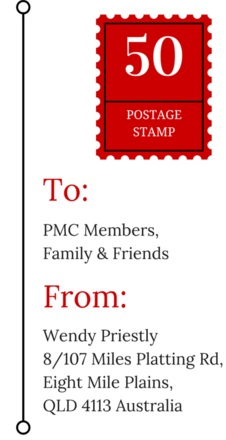
Hi to all PMC members,
You may have thought we were travelling on a train for all of the Trans Siberian Rail journey. So did we, until a few days before the tour when we were advised the Chinese government was taking all private trains to transport all its officials to a large meeting in Beijing. That meant we were
without a train for our journey from Beijing to the Mongolian border.
Thankfully the tour company – Zarengold – was able to arrange a convey of 5, s***** tour buses to take all train guests (135) from Beijing to the Mongolian border. But before we set out on our 16 hour journey, we were hosted to a Peking Duck dinner by the top Peking Duck restaurant in Beijing. This was a great opportunity to see a master chef and meat slicer at work. Once the duck has been baking in a steam ovenfor over 24 hours it is ready for eating. However the meat slicer needs to make sure that they cut the duck into over 400 slices. They take great care to cut into small thin slices. Their skill was praised by the rest of the group, but being a vegetarian I declined the offer of a taste.
The next morning we set out on our travels in our convoy of 5 buses. However it has been raining overnight and very heavy rain had fallen in some western provinces of China. This created a few hours of disruption to our journey. When we came across one of the toll gates owned by one province while the road was owned by another province, there was a stalemate as to who could or could not give permission to continue on our journey. The problem was that the province which owned the toll gate had been flooded and water was flooding their main street. Even though our guides explained we were not headed in that direction and that our weather forecasts and information indicated we were very safe to proceed, this did not compute. We had to stop our journey until an official much higher up approved our buses to continue on our route. After some 2 hours of waiting we were given the all clear as word had come down that it was really OK for us to continue.
Progressing along the newly built highway for another 4 hours we came to the city of Datong. This is a city which previously had been dedicated to coal mining with coal dust floating in the air our guide explained. Now however she was very happy to come and see the changes that had been made to the city due to the change from coal being used for heating and electricity generation. The city now has clear air and massive tree planting projects along the sides of all roads and highways.
The city is attracting additional population numbers from wider areas.
This city has approved the building of massive numbers of high rise developments in anticipation of this growing population. Datong is now 2 million and growing fast. Facilities for the population are also being built ahead of people moving in. There does seem to be many many high rises completed and empty. But this is due to the nature of the Chinese city development approach of build and they will come (or be forced to re-settle here). A great contrast to the western approach of increasing population without facilities of parks, hospital, schools, retail and commercial and only providing them after the population has arrived. Although we again had wet weather over the next few days we could see the growing towers being made ready for the incoming population.
While in Datong the Tour operator provided us with another additional experience with a visit to an ancient buddhist grotto. The entrance to this grotto is lined with imposing columns and inscriptions to make the visitor aware of the significance of this temple.
Cut out of this rocky mountain from the top down are numerous temples displaying many buddhist shrines and statues of the buddhist faith. This grotto has survived many of the uprisings and political changes and destructions that have left other historical items in ruins. The preservation of this grotto and cave statues serves well for the new approach in China today as they wish to preserve their past and ancient history for the record and also for the increase in domestic and overseas tourism.
As we move out of Datong to the next city we again find we are presented with more high rise being built in anticipation of incoming population numbers. This type of construction continues for many miles into the inland of China and to Inner Mongolia which is part of China, while the Republic of Mongolia is an independent nation.
We also see that many of the shops and retail facilities we see in Australia are also to be found in many Chinese cities as well. The supermarket, Subway, KFC and MacDonald’s also feature on most main streets.
Progressing further west we come across many massive infrastructure projects of bridges to no where and roads to ends of the earth. Many of these mighty creatures seem to rise out of nowhere and then disappear into the distance. The end some 50 – 60 kms further on.
Not until going further on do you see that the roads and bridges are leading to more great population cities. China with a population of over 3 billion needs many cities of the 2 – 5 million size to cover the population that is now moving from the areas further out and into the cities.
As the trip covers many miles and the hours turn over we need to make the regular stops for our comfort brake. Along these roads you come across service centres for petrol, comfort, food, souvenirs and of course the exercise machines to see the travellers keep fit and healthy while they travel. The vast distances that drivers and passengers travel in China means they need to take regular breaks and so the government has required some exercise facilities be available for such travellers as a stop and revive station.
As our convoy pulls into one of the service centres it is like a swarm of locusts descending on a small village. We outnumber the Chinese officials who are everywhere to ensure that no disruptive elements are upsetting the system. And any foreigners are kept to their expected behaviour in the country they are visiting.
So off we head again on the long and extensive road network that seems to have us as the only traffic on this major highway of multiple lanes both ways. Our convoy rolls on and every few kms we can be lucky to see a car either going our way or perhaps passing us in the opposite direction.
As we move to Inner Mongolia (still part of China) we start to cross the Gobi Desert. The driest place on earth. We expect to see sand like the deserts of Australia, but are very surprised to see that with all the rain they have been having this last week it has made the grasses grow and the desert has become a carpet of green. This of course is no different to the centre of Australia when the rains come to Alice Spring or Uluru. The location is dry most months of the year, but turns green for a few weeks when the wet comes to the centre. Memories of the song – Raining on the Rock, come to mind as we look out the window and see such a different picture of the Gobi desert from what we had been expecting.
In such a dry climate many fossils have been found and the area has capitalised on this and made many bronze statues of the animal fossils found here. Such a contrast is the scene from the window. Bronze statues of ancient dinosaurs, ancient palms yet in the distance modern alternative energy sources of energy wth the wind farms can be seen. More dinosaurs and wind farms across the whole desert landscape.
Finally our drivers have reached the lunchtime point. We stop at a border town of Inner Mongolia and the Republic of Mongolia. We look around and see that signs seem to be in Russian language characters, but it is not Russian. Why is it so? Well we are told, Russia assisted back in the 1950’s to document the Mongolian language which was not a written language and so the use of the
Russian language symbols.But we see that we are not without some current facilities. Radio station KTV Music is across the road from the restaurant.
After a satisfying lunch we make our way to the border crossing that will take us to our long awaited Trans Siberian train. The border guards and customs officials check all our passports and ensure that all persons are accounted for before they will let any of the convoy across.
We are ready to board our train, but get such a shock as we look across the train line and see the old green train waiting before us. Much to our relief we are told that a local train has blocked the access to our train and we will have climb up and through this train to board our train on the other side of this old green one. Thank goodness for that.
As we cross over to meet our train we notice there are 16 sleeping carriages and 4 dinning carriages and we need to find our carriage 11. Finally we find this one and can climb aboard and start to unpack and get ready for the coming journey.
As we board the train we are now sent off by a Mongolian group of throat singers and their instruments. What a great way to start the tour from Mongolia.
Now for a rest and dinner.
Regards
Wendy


